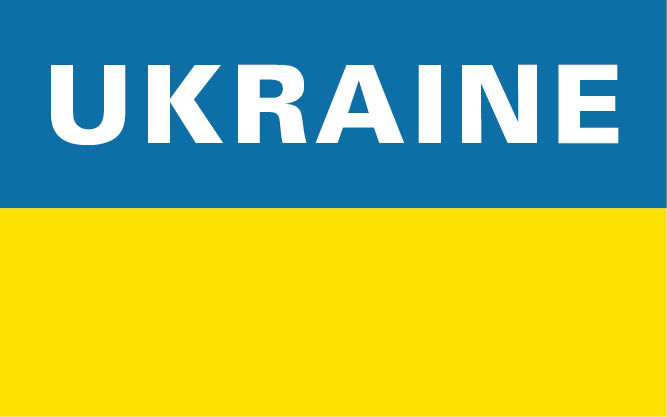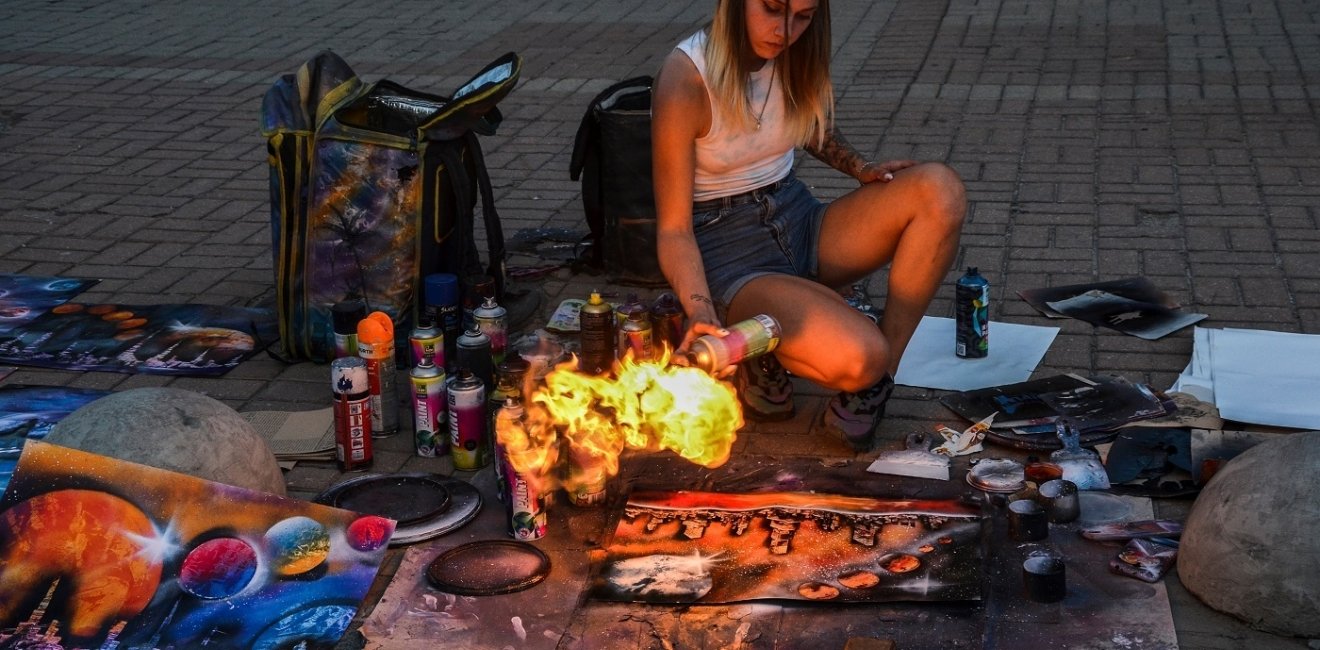
A blog of the Kennan Institute
Artist Dana Kavelina, a native of now-occupied Melitopol, did not need to wait and see what would happen to Ukraine when Russian forces came over the border in February 2022. She had seen what had happened in 2014 when pro-Russian separatists declared their “independence” in Luhansk and Donetsk. Women would be brutalized again, with rape being used as a weapon intended to destroy their humanity. Kavelina was already engaged in a long-term project called “Mother Srebrenica Mother Donbas,” bringing sketches, interviews, linear narrations, and video together to weave a story of woman’s war experiences in the Donbas, Bosnia and Herzegovina, and elsewhere. She understood that “every war is a war against women” in terms of dehumanization and terror.
The need to reclaim agency in the face of horrendous brutality emerges as the central theme in the powerful new art exhibit, Women at War, fashioned by New York curator Monika Fabijanska. She brings together the creations of a dozen women artists from Ukraine working in genres ranging from sketch and oil painting to photography and video to offer a potent condemnation of the current invasion in Ukraine. Yevgenia Belorusets, Oksana Chepelyk, Olia Fedorova, Alena Grom, Zhanna Kadyrova, Alevtina Kakhidze, Dana Kavelina, Lesia Khomenko, Vlada Ralko, Anna Scherbyna, Kateryna Yermolaeva, and Alla Horska share intensely personal visions of the horrors inflicted on Ukrainian women, juxtaposing “traditional and contemporary gender roles in order to explore notions of victimhood,” according to the gallery's press release. These women emerge as powerful agents of their own destinies despite the brutally misogynist attacks unleashed by occupying soldiers.
Fabijanska initially mounted the exhibition at New York City’s Fridman Gallery in cooperation with Kyiv’s Voloshyn Gallery (currently operating in Miami) in the summer 2022. After a stop at Wesleyan University in Connecticut, the show moved to Washington DC’s Stanford in Washington Art Gallery in January, where it will run into March. The decision to bring the exhibit to Washington provides policymakers the chance to experience the power of Ukraine’s wartime art, an energy experienced in Ukraine many times over, as the other posts in this series have showcased.
Each of the artists in Women at War has compiled an impressive artistic record in Ukraine and internationally, and each was nurtured by an independent Ukraine now threatened by the return of patriarchal authoritarianism, should Russia emerge victorious.
The exhibit’s power begins with the artists’ explorations of gender roles and the gender divide at a time of war. Their pieces also shed light on the historic context of the Donbas in particular. Long the center of the Russian Empire’s, and then the Soviet Union’s, heavy industrial belt, the region developed a culture rooted in mining, heavy industry, and male heroism. As the artists reveal through painting and video montage, the Soviet regime elevated the masculine hero-worker to saintly status. Women, however, played a major role in the region’s economy and culture. Moreover, as Lesia Khomenko’s oversized portrait of “Max in the Army” exposes, the very workers portrayed as heroes of socialist labor at times resisted the drive of Soviet overseers to squeeze more from them. Donetsk mining specialist Volodymyr Klebanov, for example, founded the Soviet Union’s first—albeit short-lived—trade union in the 1970s after more than a decade of struggle.
For the women of Donbas, the crisis triggered by the loss of home and family—both personal and public—dates back to 2014. For earlier artists, such as Alla Horska (1929–1970), the story dates to the movement of dissident artists in the 1960s (and even before). In 1962, Horska investigated an eyewitness report of mass graves in the town of Bykivina near Kyiv dating from the 1920s and 1930s. As a result, she served seven years in a labor camp and five years in internal exile. Afterwards, she worked in Donetsk until she was murdered in 1970, most likely at the hands of the KGB. One of her linocuts appears in the exhibit. At the other end of the arc is Olia Fedorova, an artist in her 20s, who created and then photographed an outdoor installation of anti-tank “hedgehogs” made out of paper.
Taken together, this work underscores the continuity of artistic achievement, the rejection of patriarchal glorification, and conflicting national identities underlying efforts to form a new Ukrainian narrative. The exhibit’s power rests on the ability of Ukrainian women to define for themselves who they are in this moment through art.
The opinions expressed in this article are those solely of the author and do not reflect the views of the Kennan Institute.
Author

Former Wilson Center Vice President for Programs (2014-2017); Director of the Comparative Urban Studies Program/Urban Sustainability Laboratory (1992-2017); Director of the Kennan Institute for Advanced Russian Studies (1989-2012) and Director of the Program on Global Sustainability and Resilience (2012-2014)

Kennan Institute
After more than 50 years as a vital part of the Wilson Center legacy, the Kennan Institute has become an independent think tank. You can find the current website for the Kennan Institute at kennaninstitute.org. Please look for future announcements about partnership activities between the Wilson Center and the Kennan Institute at Wilson Center Press Room. The Kennan Institute is the premier US center for advanced research on Eurasia and the oldest and largest regional program at the Woodrow Wilson International Center for Scholars. The Kennan Institute is committed to improving American understanding of Russia, Ukraine, Central Asia, the South Caucasus, and the surrounding region through research and exchange. Read more

Explore More in Focus Ukraine
Browse Focus Ukraine
Talking to the Dead to Heal the Living

Ukrainian Issue in Polish Elections




